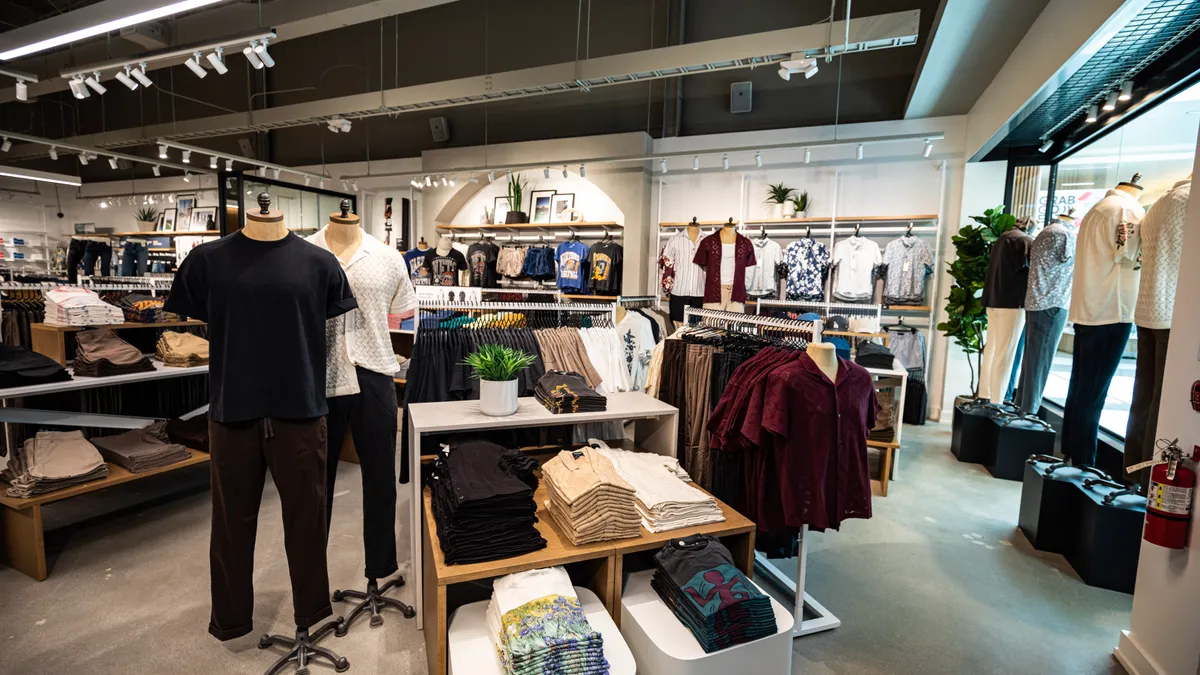Dive Brief:
- From factories to freight, Abercrombie & Fitch’s supply chain is performing better compared to 2022, with costs down, performance up and extra capacity in production, executives said on the company’s Q2 earnings call in late August.
- “With a functioning supply chain, we can once again run the business the way we would like, leveraging chase to read and react and drive inventory receipts,” Scott Lipesky, the apparel company’s CFO and COO, told analysts.
- With shipping times improving and merchants chasing more product, the company reduced inventories by 30% year over year in Q2. Operating margin was 9.6%, a “significant improvement” from a year ago made possible in part by falling costs for freight and raw materials, the company said.
Dive Insight:
Abercrombie, along with many of its peers in the apparel space, is reaping the benefits of a supply chain that is, as Lipesky put it, “in a good place.”
It’s not just costs, but the performance and capacity of the company’s supply chain that is giving Abercrombie’s operations and profits a boost.
“When you think about transportation, inbound ocean sailings are better than they have been in years,” Lipesky said. “Timing is better. Fulfillment rates are better. And then even when you get on the ground here in the U.S., there's been some really good activity with a lot of the unions settling, whether it was rail, most recently with UPS, [or] West Coast ports.”
The executive also highlighted production. “There’s capacity out there in the factories, which is nice for us to be able to run a lean inventory business,” Lipesky said, adding that the extra production capacity also helps the company be fast in responding to demand.
In other words, to stay disciplined in its inventory management, Abercrombie needs the rest of its supply chain operating at a high level. That allows it to chase product as it follows demand signals.
“This Abercrombie business is very traceable now with the supply chain where it is,” CEO Fran Horowitz said on the call. “We've got a very strong sourcing and supply team where they're very agile. They work with the teams every week, respond to the business and can chase into what's working.”
Ultimately, leaner inventories and product chasing contributed to better margins and higher profits. As Horowitz put it, “With clean current inventory, we controlled the promotional calendar and reduced discounts in the second quarter, further supporting gross profit rate expansion from last year.”
Others in the industry have also drawn confidence from a loosened supply chain to cut inventories. For example, Guess Inc., backed by normalized receipt timing as well as automated inventory planning and allocating systems, is eyeing a significant inventory cut for the year. Kohl’s has also made accelerated cuts to its inventory this year to clear room for chasing demand.
















